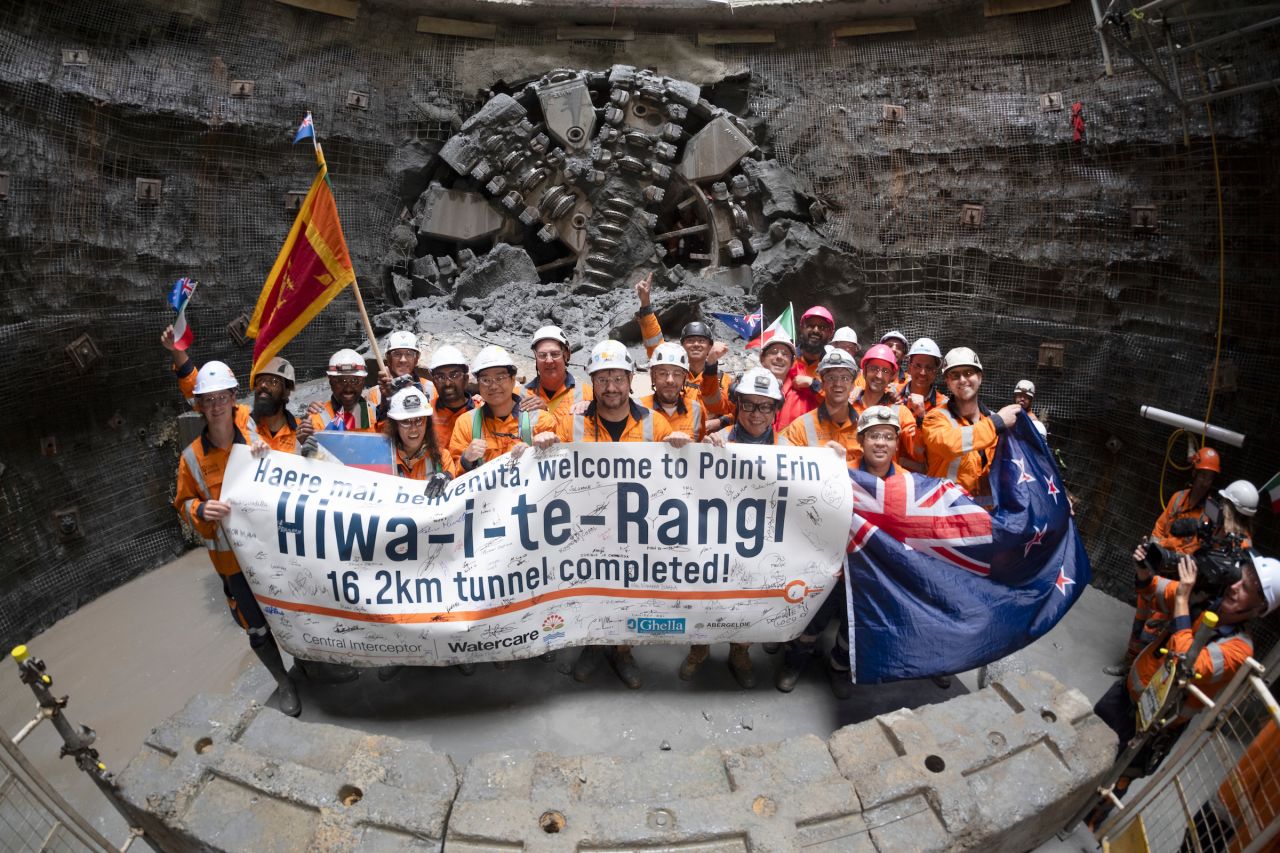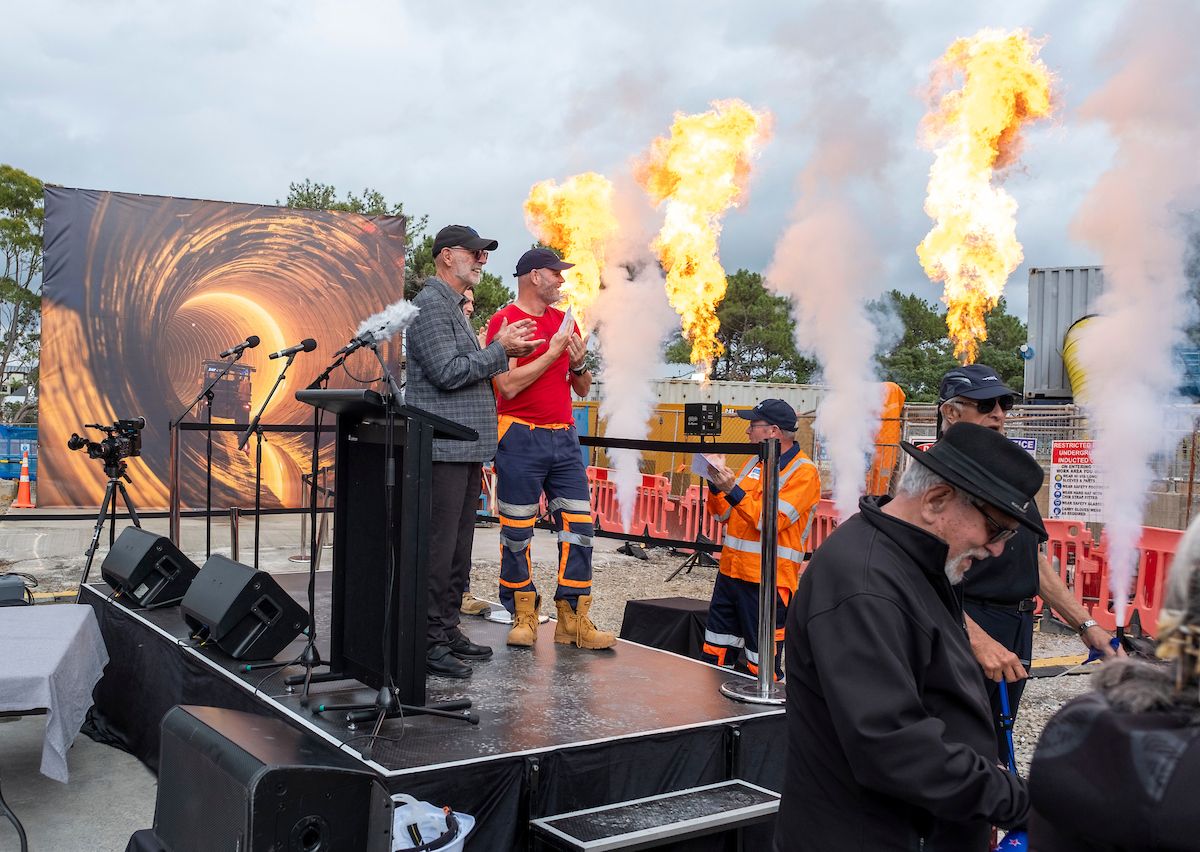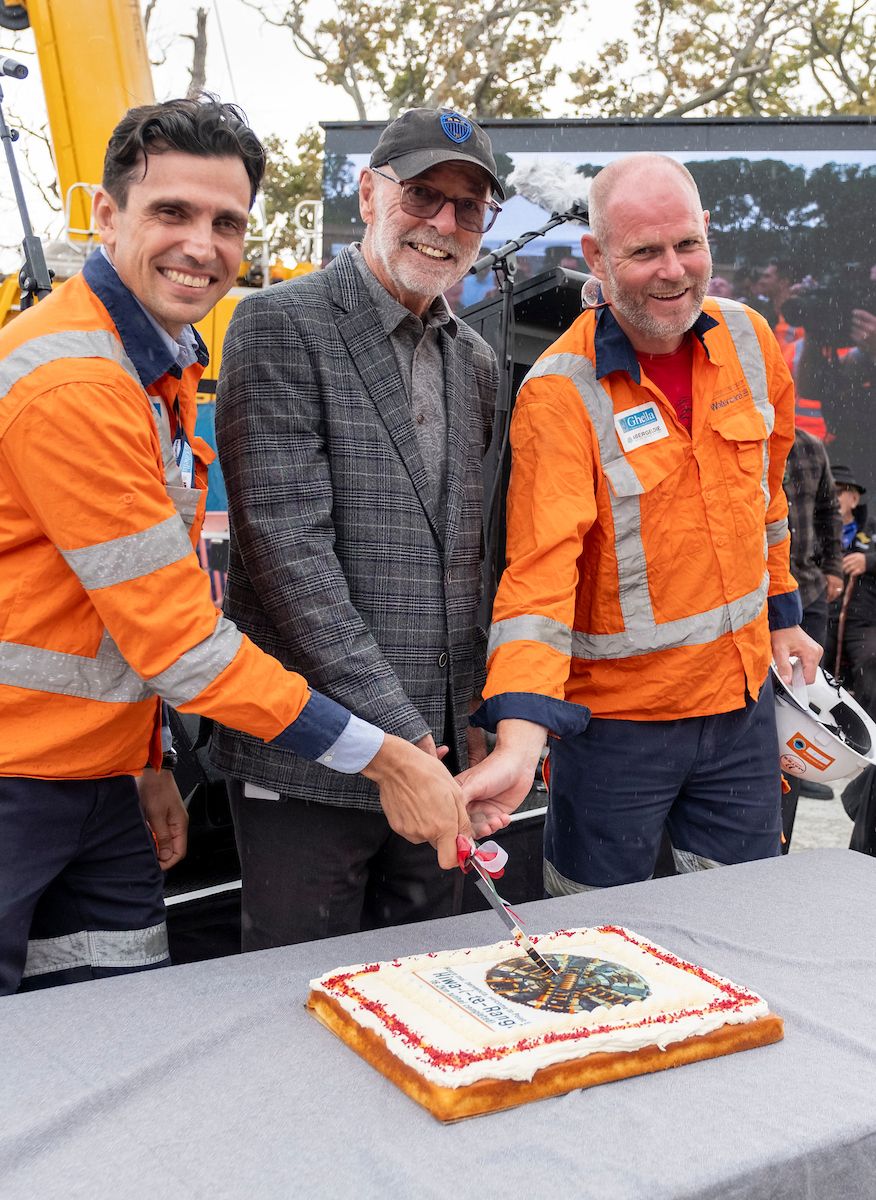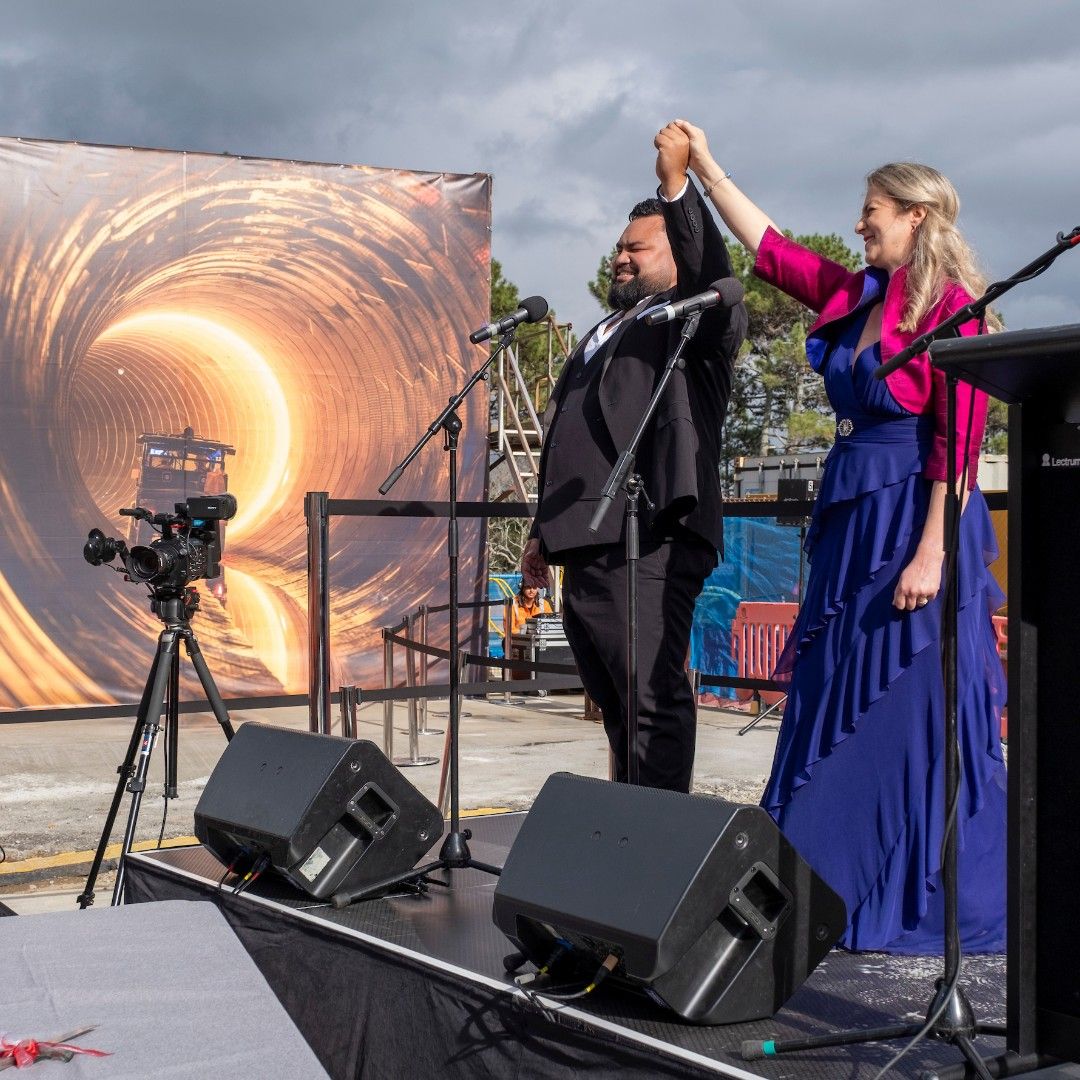Historic Milestone: Final Breakthrough on New Zealand’s 16.2km Central Interceptor
03-31-2025
We’re proud to announce a major milestone on our Central Interceptor project, New Zealand’s largest wastewater tunnel. On 28 March, our Tunnel Boring Machine, Hiwa-i-te-Rangi, completed her final breakthrough at Point Erin Reserve in Herne Bay, marking the successful completion of the tunnelling on this transformative infrastructure project.
Since her launch from the Māngere Wastewater Treatment Plant in July 2021, the 200-metre-long TBM has travelled beneath Manukau Harbour and across Auckland, installing over 10,000 tunnel rings. With a final turn of her 5.2-metre diameter cutterhead, Hiwa-i-te-Rangi emerged through the shaft wall, greeted by the cheers of 250 guests who gathered to witness this remarkable achievement. You can watch a livestream of the event here: https://www.youtube.com/watch?v=_IIsgbQCKAo
Shayne Cunis, Chief Programme Delivery Officer, praised the dedication and expertise of our Ghella Abergeldie Joint Venture construction team: “The tunnellers have worked 24 hours per day, six days a week to build the tunnel. This is world class engineering, and it’s been completed safely, economically and on time, which is rare for any major infrastructure project.”
The Central Interceptor is the longest tunnel ever constructed by Ghella using a single TBM. New Zealand Managing Director Francesco Saibene highlighted the technical complexities that made this project one of the most challenging in our 130-year history: “We had a number of challenges to overcome including crossing the Manukau Harbour and tunnelling just 15-metres below the seabed, as well as tunnelling 110-metres deep below the Hillsborough Ridge, Mount Roskill. We did all this despite the Covid-19 pandemic, skills shortages of skills, hyperinflation and major storms. We are very proud of our team.”
Our TBM, Hiwa-i-te-Rangi, was named by local school students after a Matariki star. Operating around the clock, she laid up to 10 tunnel rings per day. The tunnel’s concrete rings are lined with a plastic coating to protect against wastewater corrosion, ensuring a lifespan of 100 years.
Now that tunnelling is complete, our teams will focus on dismantling the TBM and finalising key project components. This includes thermal welding of tunnel segment joins to ensure an airtight seal and integrating the new tunnel into Auckland’s wastewater network.
The project has already begun making an impact, with the southern section of the tunnel from Blockhouse Bay to Māngere now operational. A new pump station at Māngere is channelling stormwater and wastewater flows to the treatment plant, significantly improving Auckland’s wastewater management.
By the time the full project is completed in 2028, 80% of wet weather overflows into local streams will be eliminated, improving water quality at Auckland’s beaches. The Central Interceptor will also provide capacity for future urban growth and strengthen the city’s wastewater resilience.
As this landmark project nears completion, Ghella remains committed to delivering world-class infrastructure that enhances communities and protects the environment. Our expertise and dedication continue to drive some of the world’s most complex tunnelling and engineering projects, ensuring a more sustainable future for generations to come.





